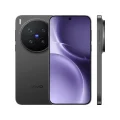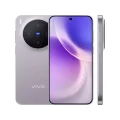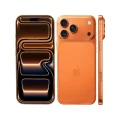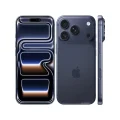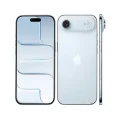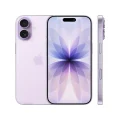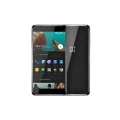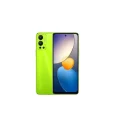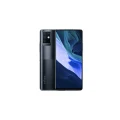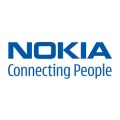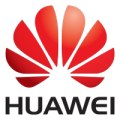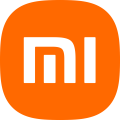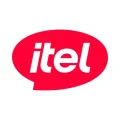- Home
- All Products
- Google Pixel
- Google Pixel 4 XL
Google Pixel 4 XL
-
Battery: Li-Po 3700 mAh
-
RAM: 6GB, 6GB
-
Storage: 64GB, 128GB
-
Display: P-OLED, 6.3 inches
-
Camera: Rear 12.2 MP+16 MP, and Front 8 MP
-
OS: Android 10, upgradable to Android 13
Full Specifications
Price
General
| Model | Google Pixel 4 XL |
| Announced | 2019, October 15 |
| Released | 2019, October 22 |
| Status | Available |
| Price | 32999 BDT |
Design
| Dimensions | 160.4 x 75.1 x 8.2 mm (6.31 x 2.96 x 0.32 in) |
| Weight | 193 g (6.81 oz) |
| SIM SIM (Subscriber Identity Module) is a small card that contains mobile network subscriber's account information. This allows the phone using the card to attach to a mobile network. The SIM card is most commonly associated with GSM and UMTS mobile networks. Moving a SIM card from one phone to another allows a subscriber to switch mobile phones without having to contact their mobile network carrier. SIM cards can also be used by a phone to store limited amounts of data, such as phone numbers and text messages. |
Nano-SIM and eSIM IP68 dust/water resistant (up to 1.5m for 30 min) |
| Colors |
Clearly White, Just Black, Oh So Orange |
Display Specification
| Display Type Display Technology => A number of display technologies and types used in mobile phones => TFT (Thin Film Transistor), IPS (In-Place Switching), OLED (Organic Light Emitting Diode), AMOLED (Active-Matrix Organic Light-Emitting Diode), Super AMOLED (an even advanced version of AMOLED), Resistive Touchscreen (Resistive touchscreens contain two layer of conductive material with a very small gap between them which acts as a resistance), Capacitive Touchsceen (Capacitive touchscreen technology consists of a layer of glass coated with a transparent conductor) | P-OLED, HDR |
| Size | 6.3 inches, 98.0 cm2 |
| Resolution | 1440 x 3040 pixels, 19:9 ratio |
| Refresh Rate | 90Hz |
| Pixel Density Pixel Density (PPI) is refers to the concentration of pixels on a particular display, measured in pixels per inch (ppi). Pixel density is calculated by dividing the diagonal pixel resolution of a display by its diagonal size, higher pixel density better display quality. | 537 ppi density |
| Display Protection Display Protection => Gorilla Glass is a special alkali-aluminosilicate glass shield with exceptional damage resistance that helps protect mobile displays from scratches, drops, and bumps of everyday use, It is always better to go for a smartphone with Gorilla Glass for that added protection and peace of mind. | Corning Gorilla Glass 5 |
| Features | 81.3% screen-to-body ratio |
Platform
| Operating System OS => Every computer system run on a base software called Operating System (OS). Operating System controls all basic operations of the computer (such as smartphone, PDAs, tablet computers and other handheld devices). The Operating System allows the user to install and run third party applications (apps), apps are used to add new functionality to the device. | Android 10, upgradable to Android 13 |
| Chipset Chipset is a group of integrated circuits designed to perform one or a more dedicated functions, often with real time computing constraints, Popular smartphones are equipped with more advanced embedded chipsets that can do many different tasks depending on their programming. | Qualcomm SM8150 Snapdragon 855 (7 nm) |
| CPU CPU (Central Processing Unit) mostly known as processors, CPU processes instructions in order to carry out certain functions that make your device operate properly. Processors are often described as the brain of computers, smartphones and tablets, Smartphones and tablets rely on processors to carry out their every task, Processors are an incredibly important factor in selecting any type of computing device, including your smartphone. | Octa-core (1x2.84 GHz Kryo 485 & 3x2.42 GHz Kryo 485 & 4x1.78 GHz Kryo 485) |
| GPU GPU (Graphics Processing Unit) is a single-chip processor designed to rapidly manipulate and alter memory to accelerate the creation of images in a frame buffer intended for output to a display, This includes things such as lighting effects, object transformations, and 3D motion. | Adreno 640 |
Main Camera
| Camera Setup | Dual |
| Resolution |
12.2 MP, f/1.7, 27mm (wide), 1/2.55", 1.4µm, dual pixel PDAF, OIS 16 MP, f/2.4, 50mm (telephoto), 1/3.6", 1.0µm, PDAF, OIS, 2x optical zoom |
| Features |
Dual-LED flash, Pixel Shift, Auto-HDR, panorama |
| Video | 4K@30fps, 1080p@30/60/120fps, 1080p@30fps (gyro-EIS) |
Selfie Camera
| Camera Setup | Single |
| Resolution |
8 MP, f/2.0, 22mm (wide), 1.22µm, no AF TOF 3D, (depth/biometrics sensor) |
| Video | 1080p@30fps |
| Features |
Auto-HDR |
Network & Connectivity
| Technology | GSM / CDMA / HSPA / EVDO / LTE |
| Speed | HSPA 42.2/5.76 Mbps, LTE-A (5CA) Cat18 1200/150 Mbps |
| Wi-fi Wi-Fi is a popular wireless networking technology using radio waves to provide high-speed network connections that allows devices to communicate without cords or cables, Wi-Fi is increasingly becoming the preferred mode of internet connectivity all over the world. | Wi-Fi 802.11 a/b/g/n/ac, dual-band, Wi-Fi Direct, DLNA |
| Bluetooth Bluetooth is a wireless communications technology for exchanging data between mobile phones, headsets, computers and other network devices over short distances without wires, Bluetooth technology was primarily designed to support simple wireless networking of personal consumer devices. | 5.0, A2DP, LE, aptX HD |
| NFC NFC (Near field communication) is a set of standards for smartphones and similar devices to establish peer-to-peer radio communications with each other by touching them together or bringing them into proximity, usually no more than a few inches. | Yes |
| Positioning |
GPS, GLONASS, BDS, GALILEO |
| FM Radio | No |
| USB | USB Type-C 3.1 |
| 2G Network |
GSM 850 / 900 / 1800 / 1900 CDMA 800 / 1900 |
| 3G Network |
HSDPA 850 / 900 / 1700(AWS) / 1900 / 2100 CDMA2000 1xEV-DO |
| 4G Network |
1, 2, 3, 4, 5, 7, 8, 12, 13, 17, 20, 25, 26, 28, 32, 38, 39, 40, 41, 66, 71 - Global 1, 2, 3, 4, 5, 7, 8, 12, 13, 14, 17, 18, 19, 20, 25, 26, 28, 29, 30, 38, 39, 40, 41, 46, 48, 66, 71 - USA |
Battery
| Battery Type Battery Type => Cell phones run on various kinds of batteries depending on the manufacturer, phone size or shape and features. There are basically four types of cell phone batteries => Lithium Polymer, Lithium Ion, Nickel Metal Hydride and Nickel Cadmium. | Li-Poly (Lithium Polymer) |
| Capacity Battery Capacity is a measure (typically in Amp-hr) of the charge stored by the battery, and is determined by the mass of active material contained in the battery. The battery capacity represents the maximum amount of energy that can be extracted from the battery under certain conditions. | 3700 mAh |
| Removable | No |
| Charging |
18W wired, PD2.0 Wireless |
| Wireless Charging Wireless Charging (Inductive Charging) uses an electromagnetic field to transfer energy between two objects. This is usually done with a charging station. Energy is sent through an inductive coupling to an electrical device, which can then use that energy to charge batteries or run the device. | Yes |
Multimedia
| Loudspeaker | Yes, with stereo speakers |
| Audio Jack | No |
Storage
| Card Slot Memory Card Slot is a special slot for inserting a memory card. Memory cards allow you to expand the phone's built-in memory, A memory card (sometimes called a flash memory card or a storage card) is a small storage medium used to store data such as text, pictures, audio, and video, for use on small, portable or remote computing devices such as mobile phones, mp3 players, digital cameras. | No |
| Internal Storage Internal Storage is a data storage space (flash memory) mostly used in smartphones, tablets and other electronic devices where operating system, apps, music, photos, videos, files and other user data Is stored. |
64GB 6GB RAM, 128GB 6GB RAM UFS 2.1 |
Sensors
| Fingerprint | No |
| Other Sensors | Face ID, accelerometer, gyro, proximity, compass, barometer |
About the Google Pixel 4 XL
The Google Pixel 4 XL, released in October 2019, was the larger flagship model of the Pixel 4 series. It featured a bigger 6.3-inch OLED QHD+ display with a smooth 90Hz refresh rate, a larger 3700mAh battery, and the same advanced features as the standard Pixel 4. These included Motion Sense gesture controls using Google’s Soli radar, 3D Face Unlock for secure access, and Google’s first dual rear camera system with a telephoto lens. With its larger display and stronger endurance, the Pixel 4 XL was designed for users who wanted the best of Google’s software and photography in a bigger package.
Main Key Features
- 6.3-inch OLED QHD+ display with 90Hz refresh rate.
- Qualcomm Snapdragon 855 processor with 6GB RAM.
- 64GB or 128GB internal storage (no microSD support).
- Dual rear cameras: 12.2MP main + 16MP telephoto.
- 8MP front camera with 3D Face Unlock sensors.
- 3700mAh battery with 18W fast charging & wireless charging.
- Motion Sense gesture control (radar-based).
- IP68 water and dust resistance.
- Stock Android with 3 years of guaranteed Google updates.
Pros & Cons
Pros:
- Stunning OLED QHD+ 90Hz display.
- Excellent cameras with telephoto zoom and Night Sight.
- Larger battery than Pixel 4 for better endurance.
- Face Unlock with advanced 3D sensors.
- Smooth and bloat-free stock Android.
Cons:
- Still no ultra-wide camera (a common 2019 feature).
- Motion Sense was limited in functionality.
- No headphone jack.
- Storage is not expandable.
- The price was high compared to the hardware specs.
Why Choose This Phone?
The Pixel 4 XL is a great option for users who want a big-screen flagship with one of the best camera systems of its time. It’s perfect for those who enjoy stock Android, fast updates, and AI-powered photography. If you value display quality, clean software, and security features like Face Unlock, the Pixel 4 XL is a better choice than the smaller Pixel 4 thanks to its bigger battery and sharper QHD+ screen.
Opinion
The Google Pixel 4 XL was a strong attempt by Google to compete with premium flagships like the iPhone 11 Pro and Galaxy Note 10. Its cameras were industry-leading, especially in low-light photography, and its software was smooth and reliable. However, the lack of an ultra-wide lens and the high price tag limited its appeal. Still, for fans of Google’s ecosystem and Android purists, it was one of the most satisfying phones of 2019.
See Another Model:
FAQs about Google Pixel 4 XL
Q: Does the Pixel 4 XL still get updates?
A: No, Google ended official updates in October 2022.
Q: How is the battery life on the Pixel 4 XL?
A: Better than the smaller Pixel 4, but still average compared to rivals.
Q: Does the Pixel 4 XL support wireless charging?
A: Yes, it supports Qi wireless charging.
Q: Is the Pixel 4 XL waterproof?
A: Yes, it has IP68 water and dust resistance.
Q: What is the main difference between Pixel 4 and Pixel 4 XL?
A: The Pixel 4 XL has a larger 6.3-inch QHD+ display and a bigger 3700mAh battery, while the Pixel 4 has a 5.7-inch FHD+ display and a smaller 2800mAh battery.
Give Your Review
Disclaimer Note
You can write your own disclaimer from APS Settings -> General -> Disclaimer Note.
